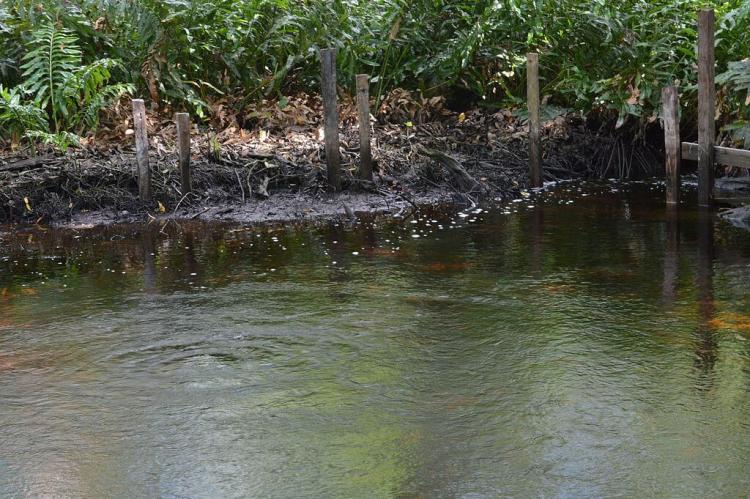Guardians of the Gulf: The Ecological Treasure of Ría Celestún
Nestled along the northwestern coast of Mexico's Yucatán Peninsula, the Ría Celestún Biosphere Reserve is a testament to the region's rich natural heritage. It encompasses diverse habitats, from coastal dunes and mangrove forests to freshwater lagoons and marshlands.
Ría Celestún Biosphere Reserve: A Jewel of Biodiversity and Conservation
The Ría Celestún Biosphere Reserve, located on the northwest coast of the Yucatán Peninsula in Mexico, is a vital sanctuary for many wildlife species and an essential wetland recognized under the Ramsar Wetlands Convention. The Gulf of Mexico bounds this unique and ecologically rich area to the west, with the El Palmar National Reserve to the north and the Los Petenes National Biosphere Reserve to the south. Covering a significant portion of the Petenes Mangrove ecoregion, Ría Celestún is a prime example of a natural wetland system supported by freshwater inflows from underground aquifers.
Ecological Significance and Unique Features
Ría Celestún's ecological importance is underscored by its diverse habitats that span a relatively small geographic area. These habitats include a marine shallow continental platform, coastal dunes, mangroves, coastal saline and freshwater lagoons, marshlands, flood meadows, low flood forests, and low semi-deciduous forests. This mosaic of ecosystems supports a wide array of flora and fauna, making it a biodiversity hotspot.
One of the distinctive features of Ría Celestún is the presence of freshwater outlets from underground aquifers, which contribute to the wetland's uniqueness and productivity. This constant freshwater inflow supports the rich biodiversity and helps maintain the area's ecological balance.
Habitat Diversity and Key Ecosystems
The reserve's habitat diversity is crucial for the survival of many species, providing breeding, feeding, and nesting grounds for resident and migratory birds. Some of the critical ecosystems within the reserve include:
- Marine Shallow Continental Platform: A vital area for marine life and coastal bird species.
- Coastal Dunes: Providing protection against coastal erosion and habitat for various dune flora and fauna.
- Mangroves: Acting as nurseries for fish and other marine species and as buffers against storms and flooding.
- Coastal Saline and Freshwater Lagoons: Supporting a range of aquatic plants and animals.
- Marshlands and Flood Meadows: Essential for water filtration and providing habitats for amphibians and reptiles.
- Low Flood Forests and Low Semi-Deciduous Forests: Home to numerous terrestrial species.
Avian Richness and Flamingo Populations
Ría Celestún is renowned for its avian diversity, hosting 304 resident species and migratory birds. The reserve is particularly famous for the American flamingo (Phoenicopterus ruber), with a population of about 23,000 individuals that nest, feed, and reproduce in the area. This makes Ría Celestún, along with the nearby Ría Lagartos Biosphere Reserve, a critical habitat for flamingos.
Other notable bird species in the reserve include the threatened plumbeous kite (Ictinia plumbea), the Brent goose (Branta bernicla), the endangered Muscovy duck (Cairina moschata), and the piping plover (Charadrius melodus). These species benefit from the diverse and protected environments within the reserve.
Endangered Species and Conservation Efforts
Ría Celestún is also a crucial nesting site for endangered sea turtles such as the hawksbill (Eretmochelys imbricata) and the loggerhead turtle (Caretta caretta). Additionally, the reserve supports several threatened or endangered mammal species, including the jaguar (Panthera onca), ocelot (Leopardus pardalis), and Northern tamandua (Tamandua mexicana).
In recognition of its ecological value, Ría Celestún was designated a Natural Protected Area in 2000. This designation aims to conserve and protect the region's biological and cultural diversity and environmental goods and services. The management strategies focus on regulating human activities and promoting sustainable development to enhance the quality of life for local communities while preserving biodiversity.
Sustainable Development and Community Involvement
Approximately 6,700 people live in the buffer zone surrounding Ría Celestún. The local economy is supported by three main activities: fishery, salt extraction, and tourism. Notably, Celestún is the second-largest fishing producer in the State of Yucatán and one of the fastest-growing localities in the region.
Promoting sustainable development is crucial for the responsible use of the reserve's natural resources. This includes managing fishing practices, regulating salt extraction, and developing eco-friendly tourism services that minimize environmental impact while providing economic benefits to the local population.
Conclusion
The Ría Celestún Biosphere Reserve is a testament to the intricate balance of natural ecosystems and the importance of conservation efforts. Its rich biodiversity, unique habitats, and critical role in supporting endangered species highlight the need for continued protection and sustainable management. By fostering a harmonious relationship between human activities and nature, Ría Celestún serves as a model for preserving the planet's precious natural resources.
